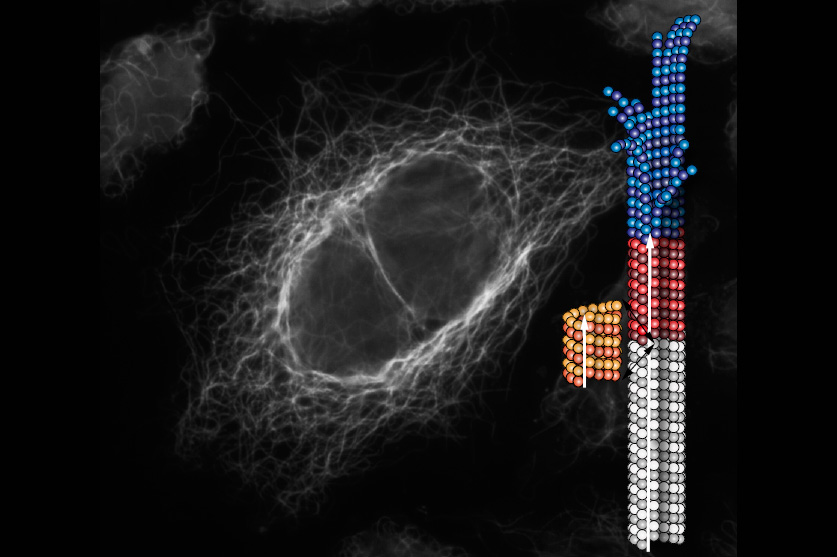
An international team of researchers led by Dr. Marian Oliva, from the Structural and Chemical Biology department at Centro de Investigaciones Biológicas Margarita Salas, has published a new structural model for microtubule tips in the journal eLife, which goes with an Insight Article. The finding could explain the harmful effects of some antitumor agents such as taxol and breaks with pre-established concepts, considered as dogma in the microtubule field.
Microtubules are cytoskeletal polymers made of α/β tubulin heterodimers assembled into a pseudo-helical cylinder. They are responsible for essential processes during cell growth and division, being a key target for antitumor drugs that modulate the dynamics of these filaments. Microtubules are far from being structurally homogeneous and instead, they display a stabilizing GTP cap at the tips. Many regulatory proteins recognize this hallmark, whereas many others bind once the GTP hydrolysis has triggered some structural changes. However, the chemical-structural link between the GTP hydrolysis site and the MT lattice is a matter of debate.
The work by Estévez-Gallego et al. analyses microtubules (and their building blocks, tubulin) along the GTPase cycle using model systems that they grow from analogues mimicking each of the hydrolysis steps (GTP, transitional GDP•Pi and GDP). A combination of high- and low-resolution structural techniques with a biochemically controlled in vitro system has allowed to show that tubulin does not change axial length upon GTP hydrolysis, which was a very well established concept on the field. Additionally, this work raises a new hypothesis in which previously described lattice expansion could be a post-hydrolysis stage involved in Pi release differentiating regions within the filament.
Reference: Structural model for differential cap maturation at growing microtubule ends. Juan Juan Estévez-Gallego, Fernando Josa-Prado, Siou Ku, Rubén M. Buey, Francisco A. Balaguer, Andrea E. Prota, Daniel Lucena-Agell, Christina Kamma-Lorger, Tohshiki Yagi, Hiroyuki Iwamoto, Laurence Duschesne, Isabel Barasoain, Michel O. Steinmetz, Denis Chrétien, Shinji Kamimura, J. Fernando Díaz, María A. Oliva eLife (2020);9:e50155 doi:10.7554/eLife.50155.
More information (in spanish):

